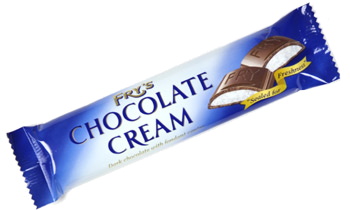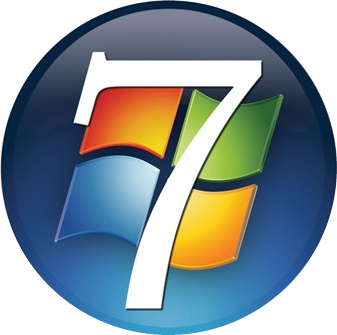We've all seen that 'Special Offer - only $99' and we know it's a feeble psychological trick to make something look less expensive. But what about the craftier use of the number seven? Why is that used on price tags so much? Or haven't you noticed?
And why does seven appear in so many brand names?
Seven is a lucky number and the reason is no secret. (Here's why). It is used in all aspects of life; especially gambling and fortune telling.
1. |  The understanding that seven is 'lucky' has not escaped the attention of marketing people. Take for example the prominent '7' adorning cans of the popular soft drink 7-Up. The drink has been in production with that name since 1929. |
2. |
Seven years earlier in 1922 the Austin Motor Company at Longbridge, England, started producing the Austin 7 motor cars. It became one of the company's most popular cars and was later copied by BMW and Nissan. The car was the basis for the first Lotus car (Mk1) and the name badge was applied to later models; the Austin A30 and the first Mini in 1959, a variation of which is still being sold over 60 years later. The seven slots on a car's front grille unmistatenly identifies the brand as a Jeep. Designed by Ford in the late 1940s, it remains the iconic symbol of those who care little for their own and others' safety or environmental degradation. Even so, they continue to sell well. Could it be that lucky seven grille? |
3. |  In 1927, the 7-Eleven convenience store was founded. It has over 27,000 stores in the US and 17 other countries, had its first billion sales year at the start of the 70's (1971) and its first billion sales quarter at the end of the 70's (1979). The store was originally open from 7 a.m. until 11 p.m. but now is usually open around the clock. Yet despite the changed opening hours, seven has not only been retained but is prominent in the company's logo. The parent company of 7-Eleven, the fifth largest retailer in the world, adopted the lucky number in their name: 'Seven&i Holdings'. In July 2007 (7/7), Seven&i announced their plans to increase the number of 7-Eleven stores in the USA by 7,000. |
4. |  Then there's that delicious dark chocolate bar with a white fondant centre. The makers, JS Fry and Sons (now owned by Cadbury), moulded the chocolate bar into seven pieces. Their unforgettable jingle for the TV adverts from the 1960's was: "Seven pieces of Heaven, Fry's Chocolate Cream". The original seven-section mould designed by Francis Fry in 1875 is the same today and this successful product is the oldest of Cadbury's brands. |
5. | Japan Tobacco's best-selling poisons are Mild Seven... |
6. | |
7. |  For Apple Computer, Inc. System 7 has been the most successful operating system (1991-1997). In 2009 the Microsoft operating system Windows 7 was released. Why was it called Windows 7, when the product was merely a modest upgrade from Windows 6 (Vista)? A more accurate name would have been Windows 6.1 but the company's marketing strategists decided to use a luckier name. Four years later, many people groaned at the launch of Windows 8, much preferring to retain the hugely popular Windows 7 which lasted longer than the other 7 brands. Indeed, Windows 7 proved so popular that Microsoft had to resort to an aggressive and involuntary upgrade to Windows 10, leading to an unprecedented number of complaints from their customers. |
In garage sales and junk shops (euphemsistically called 'recycle' shops) it's common in Japan to see prices discounted from 1,000 yen to 777 yen. And that's not only because 777 is a lucky number.
We all know that 7 is closer to 5 than it is to 10, so if something is reduced in price from 10 yen to 7 yen, we instinctively think it's almost half price. What we don't immediately notice is that 777 is closer to 1,000 than 500.
Tests in 'price psychology' have shown that if a $123.45 item is reduced to $123.44 then there's no diference in sales, but if a $100.00 item is reduced to 99.99, then sales increase because the left-most digit is dropped, the cash-reminding "$" is omitted, and the ".99" must be insignificant because it's a smaller font. We all know that's a psychological trick, and we fall for it.
More interesting, however, is that where the original price was $95 and the price is inflated to $99, sales (and profits) go up. And if the $95 price is inflated to $97, sales climb even higher because people imagine there's an even bigger discount.
Where there are no price restrictions retailers can play with prices to see which price sells the most and generates the largest profit. That's their job.
Why are we showing photos of other products but not cigarettes? Well, let's just say, once again, that the smoking epidemic is one of the biggest causes of preventable disease, illness and premature death worldwide. (Source: who.int/.... See also nhs.uk/...)
Do you know the difference between Windows 8 and Windows 7?
One, of course!
Email us if you've seen this in another country
The hyperlink may no longer be active, but infibeam.com was advertising a book at the discounted price of 777 rupees. The book's title? 'Kaplan GRE Exam Subject Test: Psychology'
And where there are price restrictions retailers can play other tricks, such as publishing a higher number (of anything) before the price, which can make the price look smaller. This can happen when the reader subconsciously takes the higher number as a reference point before reading the smaller number in the price:
Available in 850 stores nationwide
Only $24
or omitting commas in the price, the cost of tax and/or delivery:
Reserve your 4D TV today
Phone 624 885 923
£1500
+delivery
and so on.